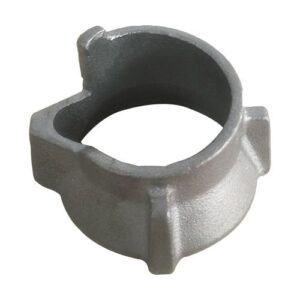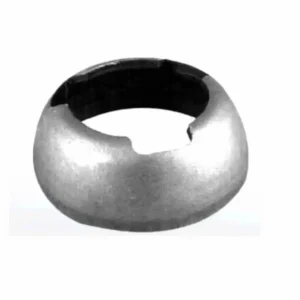Props
Props
Props Description
- Purpose: Props are used to provide temporary support to concrete slabs, beams, and other structural elements during the construction and curing process. They ensure that the formwork remains stable and aligned, preventing sagging or deformation under the weight of wet concrete.
- Design: Props consist of two telescopic steel tubes—an inner tube and an outer tube—that allow for adjustable height. The inner tube slides within the outer tube and is secured using a locking mechanism such as a pin or nut to achieve the desired length. This telescopic design offers flexibility in adjusting to various heights, making props suitable for different construction requirements.
- Ease of Use: Props are designed for quick and straightforward assembly and adjustment, enabling easy installation and removal. The locking mechanism allows for secure fixing at the desired height, providing reliable support during the concrete setting process.
Components of a Prop
Inner Tube:
- A smaller-diameter steel tube that slides within the outer tube, allowing for height adjustment.
- Equipped with holes at regular intervals to accommodate the locking pin or nut.
Outer Tube:
- A larger-diameter steel tube that houses the inner tube.
- Contains a threaded section with a nut for fine height adjustment, ensuring precise leveling.
Locking Mechanism:
- Pin and Hole System: A pin inserted through aligned holes in the inner and outer tubes to secure the desired height.
- Adjustable Nut: Located on the threaded part of the outer tube, allowing for micro-adjustments and secure fixing of the inner tube.
Base Plate and Head Plate:
- Base Plate: A flat steel plate at the bottom of the prop, providing a stable foundation and distributing the load evenly on the ground.
- Head Plate: Located at the top of the prop, designed to support horizontal formwork beams or slabs. The head plate is typically shaped like a "U" to hold beams securely.
Technical Specifications
- Material: Constructed from high-strength steel, often galvanized to enhance durability and resist corrosion in various construction environments.
- Load Capacity:
- Designed to support substantial loads, with typical load-bearing capacities ranging from 20 kN to 40 kN, depending on the prop's size, material thickness, and extended height.
- Adjustable Height:
- Props are telescopic and offer a wide range of height adjustments, typically:
- Minimum height: 1.5 meters (for smaller props).
- Maximum height: Up to 4.5 meters or more (for larger props).
- The exact height range varies based on the specific type and size of the prop.
- Props are telescopic and offer a wide range of height adjustments, typically:
- Tube Dimensions:
- Outer Tube: Usually has a diameter of approximately 56 mm to 76 mm.
- Inner Tube: Typically ranges from 48 mm to 63 mm in diameter.
- Surface Finish:
- Generally galvanized or powder-coated to protect against rust and corrosion, ensuring long-term use in outdoor and high-humidity environments.
- Weight:
- Varies depending on the size and thickness of the tubes. Typically, props weigh between 10 kg to 30 kg.
Advantages of Using Props
- High Load-Bearing Capacity: Designed to handle significant loads, providing reliable support for formwork during concrete pouring and curing.
- Adjustability: The telescopic design allows for fine height adjustments, making them suitable for various construction projects with different height requirements.
- Easy Installation: Simple locking mechanisms (pins and nuts) allow for quick setup, adjustment, and removal, saving labor time on construction sites.
- Durability: Constructed from high-strength steel and often galvanized, props are resistant to deformation, corrosion, and harsh construction conditions, allowing for reuse in multiple projects.
Applications
- Slab Formwork Support: Commonly used to support the formwork for casting concrete slabs, ensuring stability until the concrete has set and can bear its own weight.
- Beam and Column Formwork: Props are also used to support horizontal beams and vertical columns in various construction stages.
- Shoring: Provides temporary shoring for walls and other vertical structures during construction or repair work.
Sizes of Props (from WTD catalogue)
- Prop Type 1: Adjustable from 1.5 m to 2.5 m.
- Prop Type 2: Adjustable from 2 m to 3 m.
- Prop Type 3: Adjustable from 3 m to 4 m.
- Prop Type 4: Adjustable from 3.5 m to 4.5 m.
Props Description
- Purpose: Props are used to provide temporary support to concrete slabs, beams, and other structural elements during the construction and curing process. They ensure that the formwork remains stable and aligned, preventing sagging or deformation under the weight of wet concrete.
- Design: Props consist of two telescopic steel tubes—an inner tube and an outer tube—that allow for adjustable height. The inner tube slides within the outer tube and is secured using a locking mechanism such as a pin or nut to achieve the desired length. This telescopic design offers flexibility in adjusting to various heights, making props suitable for different construction requirements.
- Ease of Use: Props are designed for quick and straightforward assembly and adjustment, enabling easy installation and removal. The locking mechanism allows for secure fixing at the desired height, providing reliable support during the concrete setting process.
Components of a Prop
Inner Tube:
- A smaller-diameter steel tube that slides within the outer tube, allowing for height adjustment.
- Equipped with holes at regular intervals to accommodate the locking pin or nut.
Outer Tube:
- A larger-diameter steel tube that houses the inner tube.
- Contains a threaded section with a nut for fine height adjustment, ensuring precise leveling.
Locking Mechanism:
- Pin and Hole System: A pin inserted through aligned holes in the inner and outer tubes to secure the desired height.
- Adjustable Nut: Located on the threaded part of the outer tube, allowing for micro-adjustments and secure fixing of the inner tube.
Base Plate and Head Plate:
- Base Plate: A flat steel plate at the bottom of the prop, providing a stable foundation and distributing the load evenly on the ground.
- Head Plate: Located at the top of the prop, designed to support horizontal formwork beams or slabs. The head plate is typically shaped like a "U" to hold beams securely.
Technical Specifications
- Material: Constructed from high-strength steel, often galvanized to enhance durability and resist corrosion in various construction environments.
- Load Capacity:
- Designed to support substantial loads, with typical load-bearing capacities ranging from 20 kN to 40 kN, depending on the prop's size, material thickness, and extended height.
- Adjustable Height:
- Props are telescopic and offer a wide range of height adjustments, typically:
- Minimum height: 1.5 meters (for smaller props).
- Maximum height: Up to 4.5 meters or more (for larger props).
- The exact height range varies based on the specific type and size of the prop.
- Props are telescopic and offer a wide range of height adjustments, typically:
- Tube Dimensions:
- Outer Tube: Usually has a diameter of approximately 56 mm to 76 mm.
- Inner Tube: Typically ranges from 48 mm to 63 mm in diameter.
- Surface Finish:
- Generally galvanized or powder-coated to protect against rust and corrosion, ensuring long-term use in outdoor and high-humidity environments.
- Weight:
- Varies depending on the size and thickness of the tubes. Typically, props weigh between 10 kg to 30 kg.
Advantages of Using Props
- High Load-Bearing Capacity: Designed to handle significant loads, providing reliable support for formwork during concrete pouring and curing.
- Adjustability: The telescopic design allows for fine height adjustments, making them suitable for various construction projects with different height requirements.
- Easy Installation: Simple locking mechanisms (pins and nuts) allow for quick setup, adjustment, and removal, saving labor time on construction sites.
- Durability: Constructed from high-strength steel and often galvanized, props are resistant to deformation, corrosion, and harsh construction conditions, allowing for reuse in multiple projects.
Applications
- Slab Formwork Support: Commonly used to support the formwork for casting concrete slabs, ensuring stability until the concrete has set and can bear its own weight.
- Beam and Column Formwork: Props are also used to support horizontal beams and vertical columns in various construction stages.
- Shoring: Provides temporary shoring for walls and other vertical structures during construction or repair work.
Sizes of Props (from WTD catalogue)
- Prop Type 1: Adjustable from 1.5 m to 2.5 m.
- Prop Type 2: Adjustable from 2 m to 3 m.
- Prop Type 3: Adjustable from 3 m to 4 m.
- Prop Type 4: Adjustable from 3.5 m to 4.5 m.




